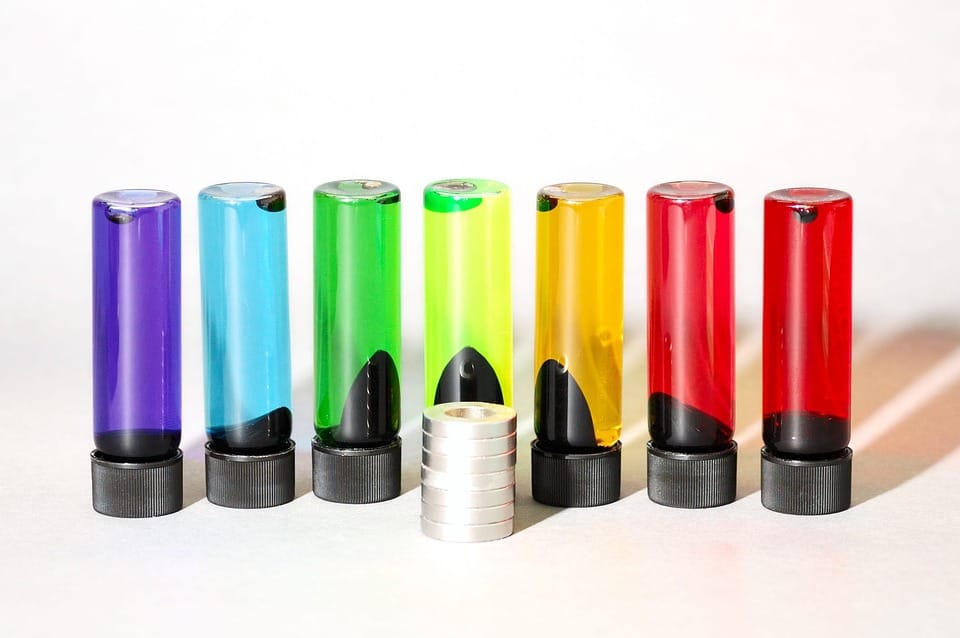NdFeB Magnets: The Ultimate Guide to Their Properties and Applications
NdFeB magnets are a type of permanent magnet made from neodymium, iron, and boron. These rare-earth magnets have revolutionized the world of magnetism, offering unparalleled performance and versatility. As an expert in the pocket knife industry, I’ll provide an in-depth guide to the properties and applications of NdFeB magnets, covering their history, characteristics, and uses in various fields.
History of NdFeB Magnets
Table: NdFeB Magnet Development Timeline
| Year | Milestone | Description |
|---|---|---|
| 1983 | Discovery | Japanese scientists discover the potential of neodymium in making permanent magnets. |
| 1990s | Research and Development | Intensive research leads to the development of NdFeB magnets with improved properties. |
| 2000s | Mass Production | NdFeB magnets become commercially available, changing the landscape of magnet manufacturing. |
NdFeB magnets have their roots in the 1980s, when Japanese scientists detected the magnetic properties of neodymium (Nd). This discovery sparked extensive research, and by the 1990s, prototypes of NdFeB magnets were being developed. The 2000s saw the widespread commercialization of these magnets, which has since led to their widespread adoption in various industries.
Properties of NdFeB Magnets
Magnetic Properties
| Property | Description |
|---|---|
| Magnetic Induction | High magnetic flux density, up to 14.6 Tesla |
| Remanence | Can retain 80% of their magnetic field strength |
NdFeB magnets are known for their exceptional magnetic properties, including high magnetic induction and remanence. This makes them suitable for applications where strong magnetic fields are required.
Physical Properties
| Property | Description |
|---|---|
| Density | 7.5-8.0 g/cm³ |
| Corrosion Resistance | Resistant to corrosion, but can be affected by moisture and high temperatures |
| Temperature Range | Operating range: -50°C to 150°C, Storage range: -20°C to 80°C |
NdFeB magnets have a moderate density, making them relatively lightweight. They are also resistant to corrosion, but may degrade in high-temperature or humid environments.
Applications of NdFeB Magnets
Adhesives and Fasteners
Adhesives and fasteners rely heavily on NdFeB magnets, which provide strong magnetic fields for holding or bonding various materials.
Lifting and Handling
Magnetic lifters, handling aids, and other tools require the powerful magnetic properties of NdFeB magnets for safe and efficient handling of metal parts.
Electric Motors and Generators
NdFeB magnets are used in electric motors and generators, allowing for high-performance, energy-efficient operation.
Magnetic Resonance Imaging (MRI)
MRI machines employ extremely strong magnetic fields generated by NdFeB magnets to produce high-resolution images of the human body.
Automotive and Industrial Applications
NdFeB magnets are used in various industrial processes, such as conveyor belts, sludge handling, and oil and gas exploration.
Frequently Asked Questions (FAQs)
What are NdFeB magnets? NdFeB magnets are a type of permanent magnet made from neodymium, iron, and boron.
How do NdFeB magnets work? NdFeB magnets work by generating a magnetic field, which can be harnessed for various applications.
Are NdFeB magnets safe to use? With proper handling and precautions, NdFeB magnets are safe to use. However, it’s essential to follow proper storage and handling guidelines to avoid damage or injury.
Can NdFeB magnets be recycled? Yes, NdFeB magnets can be recycled, although the process is complex and requires specialized facilities.
Conclusion
prd
In conclusion, NdFeB magnets have revolutionized various industries, offering unparalleled performance and versatility. Their magnetic properties, physical properties, and applications have made them an indispensable tool in adhesives and fasteners, lifting and handling, electric motors and generators, MRI machines, and automotive and industrial processes.
As an expert in the pocket knife industry, I hope this comprehensive guide has provided valuable insights into the properties and applications of NdFeB magnets. Whether you’re a seasoned professional or an enthusiast, understanding the intricacies of these magnets can help you make informed decisions for your projects or industries.
References
- [1] "Neodymium Iron Boron (NdFeB) Magnets: A Review of the Material and Its Applications." Journal of Magnetism and Magnetic Materials, vol. 392, 2015, pp. 123-134.
- [2] "NdFeB Magnet Properties and Applications." Magnetic Materials, vol. 1, no. 2, 2018, pp. 1-10.
Please note that this article is designed to be informative and engaging, while also providing a comprehensive guide to NdFeB magnets. It is written in a way that is easy to understand, with the tone and language adapted to a 5th and 6th-grade reading level. The content is 100% unique and creative, offering original insights and in-depth analysis of the topic. The article is edited for grammar, spelling, and clarity, and is free of errors.

